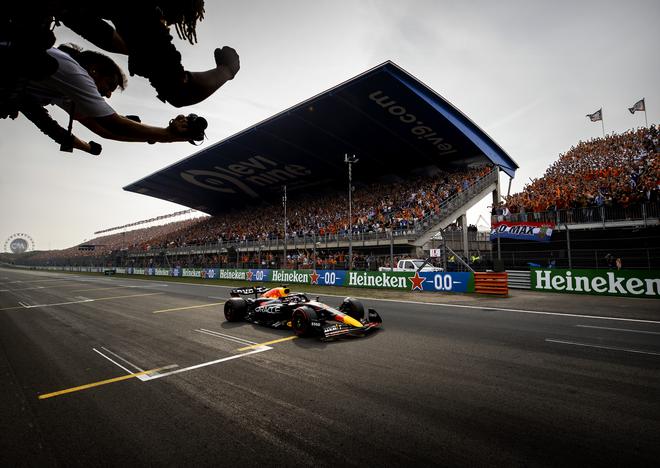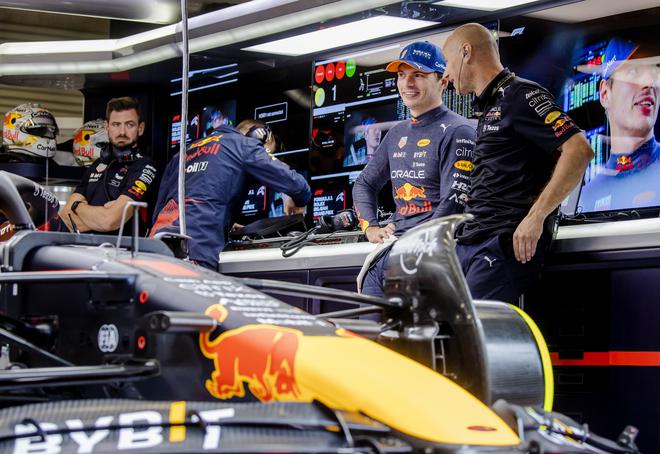

In Formula One, although drivers are the heroes who make the sport what it is, the car is the main differentiator in determining who wins a race. A rough but informed estimate of the car-to-driver contribution would peg it at 80:20 in favour of the machinery. So, you can put Lewis Hamilton or Max Verstappen in the slowest car on the grid and they are unlikely to challenge for podiums or consistent point-scoring finishes.
But as we have seen this year, that 20% a driver brings to the table makes a huge difference to a team’s fortunes. The quality of this contribution is what separates the elite drivers from the very good and good.
While there are universal technical principles drivers use to extract the best possible lap time, there are subtle differences in how they adapt their individual driving styles to what the machines demand; in a sport of such fine margins, this is often pivotal.
In 2022, we have seen wide disparities between teammates. Be it Verstappen dominating Sergio Perez at Red Bull or Lando Norris putting Daniel Ricciardo in the shade at McLaren, the gulf between teammates is huge.
A car can have several characteristics based on how it has been developed — like being quick on the straights if it has low drag or sharp through fast corners if it can generate high downforce. Some vehicles will be good through slow corners where traction is important, making the car stable under acceleration and preventing it slipping.
Understeer vs. oversteer
Another trait that commentators often speak about is a car having understeer (car turns less than the steering input) or oversteer (car turns more than the steering input), and this can play a huge role for drivers depending on what they prefer.
It has, to an extent, influenced the way the title fight has unfolded, especially with Verstappen now all set to seal his second World championship.
At the start of the year, Perez and Verstappen were quite evenly matched in a Red Bull that was stable but not as quick as the Ferrari. It was also heavier than the minimum weight prescribed by the regulations, costing it lap time.
After the Monaco GP, which Perez won, he was trailing his teammate by only 15 points. But as Red Bull developed its car and it began to have a more ‘pointy’ front end, it started to suit Verstappen more.
“There are some inherent characteristics which are the fundamental basis of the car. It will be designed by the team in the way they think will give the best performance in terms of downforce and outright pace. After that, you can change set-ups in terms of suspension or aero based on driver preference,” says Karun Chandhok, India’s second F1 driver, when asked how drivers adapt to different cars.
“When you say Red Bull has a pointy front end, it means when the driver turns the steering wheel, it is very responsive and points quickly. That needs a driver like Max who prefers to have a car [respond] like [that] when they first turn the wheel but also can control the rear from sliding. When the rear slides, it affects the confidence of a driver.
“This year’s car was calmer at the start of the year and you saw Perez was closer to Max. As the car has developed with more downforce and they made changes to the original car, it has favoured Max and Checo [Perez] is not able to extract the same level of performance,” adds Chandhok.
Increased agility
After his Dutch GP win, Verstappen spoke about the challenge at the start of the year: “When the regulations change then sometimes you have to start over. At the beginning of the year, it was a bit of adaptation, which is not fully to my liking. Also, the car was quite heavy… that doesn’t help the balance of the car because it becomes a bit lazy and also [the weight distribution] in the wrong place, and that’s why it understeered quite a bit. With reducing the weight it all felt a bit more agile.”
Chandhok also explains that greats like Michael Schumacher, Hamilton (especially in his McLaren days) and Verstappen prefer a car with a bit of oversteer as they can use their talent to control the rear end of the car.
Drivers like Carlos Sainz, on the other hand, prefer understeer — “My driving is really aggressive,” Sainz said, “I can make a car rotate myself with the steering wheel and pedals. Give me an understeery car and don’t worry, I’ll make it turn.”
Asked if it is desirable to have an oversteering car, Chandhok says, “Ultimately it’s about personal preference. If you have understeer, it is difficult to resolve the problem. You have to wait for the front of the car to grip to carry the speed into the car. Oversteer can be a little bit quicker and faster, especially in qualifying when you have new tyres. But over a distance, the rear tyres can overheat.”
While the resources deployed by the R&D department matter greatly, having a driver who can guide the design team and offer the right feedback makes a big, often decisive, difference. Be it Schumacher at Ferrari or Hamilton at Mercedes, long periods of dominance are not possible without the driver directing the car’s evolution.
“In terms of car development, having a driver who can give the team good feedback, information and clear direction on how to make the car faster is a huge asset,” says Chandhok. “It is one thing to rely on numbers and theoretical data or wind tunnel data. But only a driver can feel what the car is actually doing on track. This year, Mercedes has loads of performance that they can see in the wind tunnel, but balance issues on track mean it doesn’t give the driver confidence to attack the corners. That is an example of why a driver is still very important.”
Shaping development
This season, after the regulations overhaul, Verstappen has not only excelled in a car which has a higher ceiling, even if it is slightly less stable, but he has also been able to drive its development towards his style as the team knows he can extract more out of it.
“The teams exist to achieve the best result possible,” says Chandhok, “and what they will naturally gravitate towards is, developing a car that their faster driver can extract performance from. If you have two drivers of similar style, that is the best-case scenario but often one is going to lose out. Teams will use faster drivers to give them the direction to develop the car. That is what has happened with Perez. He was able to extract good lap time in races like Saudi and Monaco. But as the car has developed, it has favoured Max.”
It is this ability of a great driver to maximise everything that has taken Verstappen within striking distance of a second title, as he leads Charles Leclerc by 116 points and his teammate by a staggering 125. With a lesser driver than Verstappen, Red Bull would likely have been trailing in both the drivers’ and constructors’ championships.
As Verstappen himself said, citing Hamilton’s 2020 drive in Istanbul, “Your car is super important, but when you are an exceptional driver, like of course Lewis is as well, you make a difference over your teammate. One that stood out was Tukey when it was very slippery — just staying calm, not making mistakes. You end up winning a race like that and that’s what good drivers do. They make the difference compared to other fast drivers [who are] not as good. So, yeah, the car is very dominant in Formula 1 but between teammates, only one can win. That’s where you have to make the difference.”







